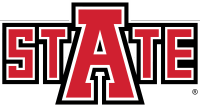Date of Award
6-26-2024
Document Type
Dissertation
Degree Name
Molecular Biosciences, Ph.D.
First Advisor
Than Boves
Second Advisor
Asela Wijeratne
Committee Members
Andrew Sweet; Fabio Hernandes; Travis Marsico
Call Number
LD 251 .A566d 2024 M38
Abstract
Symbionts, or organisms that form close and persistent associations with hosts, are ubiquitous across the tree of life, and symbioses are among the most common interspecific interactions in the natural world. Symbionts play a fundamental ecological and evolutionary role across multiple levels of biological organization – from individuals to ecosystems – and can have strong effects on global biodiversity. However, many aspects of these relationships are poorly understood including symbiont genetic diversity (inter- and intraspecific), host specificity, and the mechanisms underlying their functional nature or any context-dependent patterns. This dissertation uses a model symbiosis between permanent, obligate, ectosymbiotic vane-dwelling feather mites and their avian hosts of the family Parulidae to address these and other related knowledge gaps in symbiology. First, a comprehensive phylogenomic analysis of parulid feather mites at the species-level reveals that symbionts can exhibit wide variation in their host specificity despite limitations in dispersal. Second, a population-level genomic analysis of two mite species with contrasting degrees of host specificity rejects the specialist-generalist variation hypothesis and indicates transmission may occur at unexpected periods of the hosts’ annual cycles. These first two studies not only provide insight into the transmission dyanimcs of feather mites and how mite transmission impacts their evolution at both the species and population levels, but also highlight the application of novel genomic approaches and workflows to investigate microscopic organisms. Third, microbial surveys and resource selection analyses at the infrapopulation-level reveal that mites are selective consumers of feather microbes and exhibit a mutualistic relationship with hosts such that they clean and defend feathers from feather-degrading microbes. Fourth, an experimental manipulation of mite abundance conducted in the field indicates that mites do not impact host survival or body condition at the individual-level, but do rebound to a stable population size, regardless of host specificity. These latter two studies suggest that feather mites exhibit a commensalistic-mutualistic relationship with their hosts and emphasize that ecological and evolutionary context may determine the functional nature of symbiotic relationships. Overall, this dissertation showcases the integration of ecological and genomic data at the individual, population, and species-levels and advances our understanding of host-symbiont ecology and evolution.
Rights Management

This work is licensed under a Creative Commons Attribution-NonCommercial-No Derivative Works 4.0 International License.
Recommended Citation
Matthews, Alix Elizabeth, "Feather Mites through Genomic and Ecological Lenses: Host Specificity and Symbiosis at Multiple Levels of Organization" (2024). Student Theses and Dissertations. 86.
https://arch.astate.edu/all-etd/86

